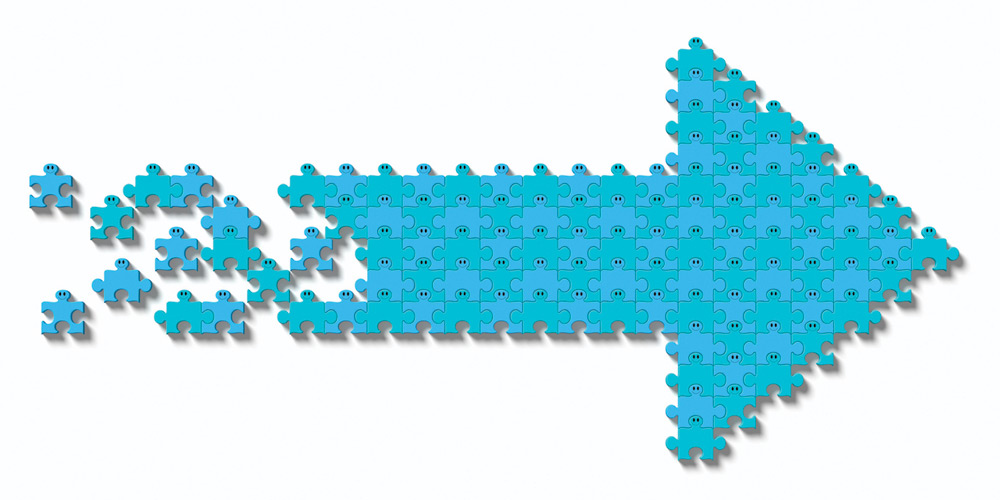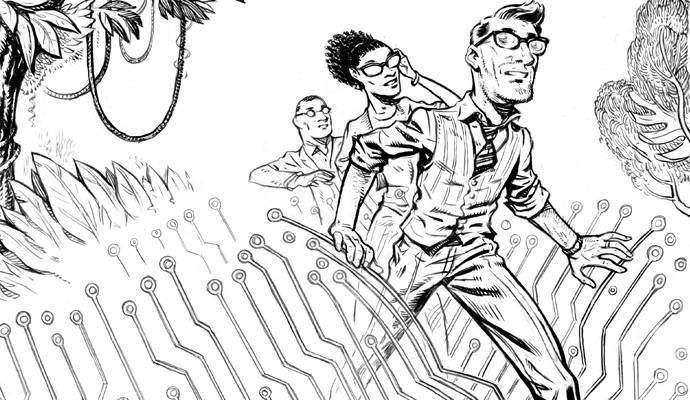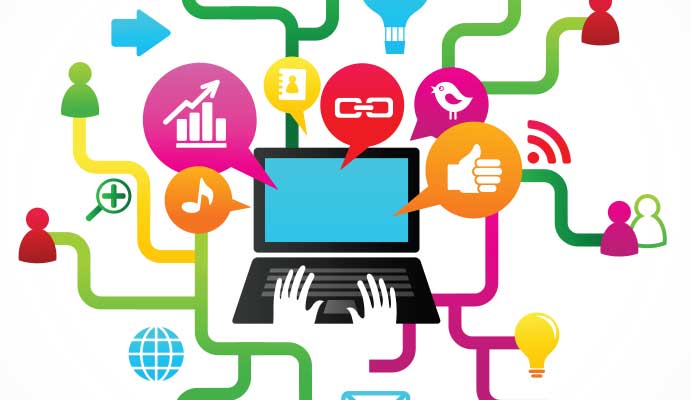Update your leadership skills to bridge the digital–human divide
Classic “soft skills” need new definitions and applications for workplaces of the future.
Note: This is part one in a three-part series addressing how leaders at every level can become better equipped to navigate the new world of work. Read part two on developing better leadership habits.
For decades, progressive business thinkers have heralded the arrival of the disruptive future of work. And now, it seems to have finally arrived. Generational and societal shifts have forced organizations to reimagine roles, benefits, and the very definition of a career. Paradigm-altering technologies have transformed information sharing, communication, and collaboration. And the digital tsunami of big data, smart automation, robotics, and everyday AI is poised to finish the revolution.
Yet despite endless pronouncements about the changing nature of work, efforts to understand the future of leadership have been insufficient. Leaders should be asking: What does it really mean to lead in a digital world where I’m also encouraged to be more human? And what should I be doing right now to get and stay ahead of the change curve?
Leaders should be asking: What does it really mean to lead in a digital world where I’m also encouraged to be more human?
Thinking about the skills future leaders will require is a good place to start. Consider PwC’s 22nd annual CEO survey, which included 1,378 CEOs from 91 territories. When asked how worried they were about a variety of potential threats to their organizations, they ranked a skills gap within their workforces as a top concern. But leaders need to be very specific about identifying the expertise that they and their fellow leaders will need. Classic skills — such as emotional intelligence, adaptability, problem solving, resilience, creativity, and innovation — are still relevant. But if leaders want to realize the full value of these capabilities, they’ll need to carefully update and customize the way they define and apply each of these skills for their unique and changing digital–human workplaces.
How to find the “core-plus” skills you need
So how does a leader go about preserving the best of the core skills while upgrading them for the evolving challenges of work? Unfortunately, in an effort to find a shortcut to the future, people often take a classic leadership trait and essentially say, “Keep doing that, but now just be a bit more agile and digitally savvy while you do it.” But it’s not enough to relabel a skill as digital and walk away. You need to redefine it from the center. The most efficient way to begin is to follow a “core-plus” logic model. Consider the following example.
Andrea is whip-smart, great with her clients, and truly passionate about the work she does. She’s also a leader of leaders — responsible for 16 midcareer managers in her region. Her industry has been transforming over the past few years, and she’s losing sleep at night wondering if her team is equipped to lead as the company moves into an uncertain future.
At industry conferences, she hears a lot about how future leaders must dynamically manage virtual teams, know their people better and collaborate with greater agility, and adapt to change and bounce back from setbacks more quickly than ever. But she wants her team to go beyond these “table stakes” capabilities. To be truly ready for the future, she needs a customized competency model that equips leaders with a reliable set of skills to address the evolving challenges they face.
I coach managers like Andrea to update their leader’s toolkit for a digital world, and you can follow a similar process for yourself and your team. Start by listing the skills that have been most consistent and valuable to your team over the past 12 to 24 months. Next, engage in conversation to define them and document examples to illustrate them in action.
In Andrea’s case, here are two of the core leadership skills her team identifies as they go about updating their competency framework:
There’s little controversy in this initial phase because the continued importance of established definitions and examples like these is agreed upon. To transition to the second phase, however, Andrea and her team have to consider a disruptive question. If their business is moving faster, if they’re more technology-enabled, and if the interface between the digital and human sides of their work becomes even more blurred, what new and different outcomes will these core skills need to help them accomplish? After lively dialogue and debate, they confirm two of the core-plus definitions:
This way of reimagining the very definitions of a leader’s skill set and gaming out their new applications — the core-plus model in action — sets up Andrea and her leadership team for success. By doing this, they create a bridge from the old core skills to the new, and they set a concrete behavioral course for everyone to follow to get more value and impact from each capability.
This exercise doesn’t just put a fresh coat of paint on old infrastructure; it builds future-ready leaders who can adapt to the unexpected circumstances they will invariably encounter. So don’t wait for your favorite business magazine or social media personality to tell you what you need to start doing. Coach yourself through the core-plus progression to tailor your own list of skills that will keep you vital and help your organization master the future of work.






